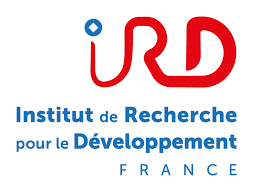Galaxy Practice
| Description | Hands On Lab Exercises for Galaxy |
|---|---|
| Related-course materials | Galaxy introduction |
| Authors | Alexis Dereeper (alexis.dereeper@ird.fr) |
| Creation Date | 15/03/2018 |
| Last Modified Date | 15/03/2018 |
Summary
- Practice 1: Basics of Galaxy (by Galaxy team)
- Practice 2: How to import datasets
- Practice 3: Concrete application: from reads to SNPs
- Links
- License
Practice 1 : Basics of Galaxy (by Galaxy team)
Practice1 will be performed in the Galaxy main -
Practice1 consists of following the "Galaxy 101" hands-on provided by Galaxy team
Practice 2 : How to import datasets
Practice2 will be performed in the Galaxy South Green.
- Connect to Galaxy South Green -
- Log in using FormationN@cirad.fr account
- Rename your history "test data upload"
Test the different ways to import datasets into your history:
- Copy/paste the content of a dataset
- Copy/paste the link/URL of an external file to be imported -
http://rice.plantbiology.msu.edu/pub/data/Eukaryotic_Projects/o_sativa/annotation_dbs/pseudomolecules/mitochondrion.dir/chrM.cds - Upload any txt file from your local computer
- Use FTP procedure to upload big file following the procedure described form Galaxy homepage
- Import a dataset from a shared data library
Practice 3 : Concrete application: From reads to SNPs
Practice3 will be performed in the Galaxy South Green.
- Create a new history for this practice (ex: SNP calling)
- From
Shared data => Data libraries, import into your history fastq datasets for 3 individuals (RC1, RC2, RC3) as well as reference fasta
Galaxy_trainings_2015 => NGS - Check these 6 files and create a collection of 3 dataset pairs
Build a list of dataset pairs. Associate files by pair and give a name to your collection - Process a FastqC analysis for RC1 to control the quality of sequencing
- Import the shared workflow called
Mapping_SNPCalling_PairedEnd - Observe the different steps of the workflow
- Run the complete workflow. It provides a collection of Bam files.
- Observe the final VCF output
Links
License
The resource material is licensed under the Creative Commons Attribution 4.0 International License (here).








